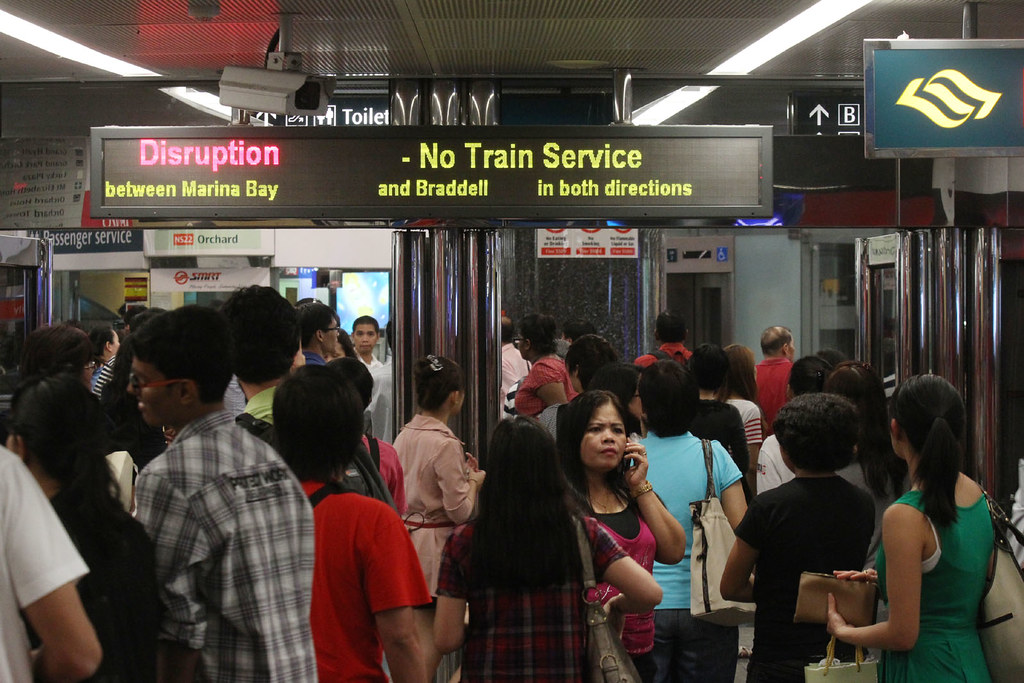In my last blog on our MRT System, I stopped at the COI report on the train disruptions in December 2011.
The COI report was delivered on 3 July 2012 and the essence of it was simply this. Both the regulator (LTA) and the operator (SMRT) had not paid enough attention to the maintenance of the ageing NSEWL, resulting in recurring disruptions train services. In conclusion, the Committee expressed that "With the various recommendations implemented, the COI is confident that future incidents, should they recur, will be much better managed."
Since the
release of the COI report, steps have been taken by LTA and SMRT to address
most of the problems in line with the recommendations of the Committee. On 11
March 2014, LTA even released news of its "Rail Network Enhancements"
on expanded capacity, shorter waits and more travel options. There were plans
to add more trains, upgrade signalling system for NSEWL and new rail lines for
faster and more connections. However, the latest incident on 7 July 2015
suggests that some basic problems have yet to fully addressed. This was also
the perception given when the promise for better train services reliability was
qualified by SMRT at their subsequent press briefing co-chaired with LTA (http://www.straitstimes.com/singapore/transport/smrt-chief-desmond-kuek-apologises-for-train-disruption-promises-better-train).
The breakdown
of our MRT system is not just a matter of our rail network failing. The latest
incident has further revealed that our overall public transport system is
ill-equipped to cope with the fallout of a major train service disruption (http://news.asiaone.com/news/singapore/mrt-disruption-puts-strain-buses-taxis).
It is therefore imperative for us to deepen our analysis of the entire
situation, including how to address public frustration. For a start, the people
are not convinced that another CEO appointed to SMRT in October
2012. who does not have the relevant technical skills or experience
in running a train operator. was the right move. And for LTA to repeatedly
impose a fine on SMRT for delays hardly solves any problem.
The cause of
the frequent breakdowns and disruptions are technical in nature. The long-term
solution is for both LTA and SMRT to appoint an independent 3rd party technical
expert in the field of urban-rail operations to fully investigate and recommend
all the measures to be taken to effectively address the problems once and for
all. Both LTA and SMRT can then look into implementing the recommendations,
which may eventually require a lot of understanding and patience from the
public. I believe that the public would understand and be able to withstand the
periods of disruptions necessitated in carrying out these recommendations to
prevent recurring train disruptions that cause so much more inconvenience to
everyone.
Meanwhile,
improvements can be made in the communication of train disruptions and the
provision of alternative transport for affected commuters. One measure is to
ensure that clear and immediate dissemination of information of disruptions are
further made at all transport waiting points, including bus stops and taxi
stands. There should also be deployment of ground staff to guide train
commuters to the location of supporting bus services and to provide bus
information. Ad-hoc taxi stands can be set up for those who wish to take taxis
and support staff can help in calling/hailing taxis. In addition, motorists who
are en-route could be roped in to help ferry commuters and help alleviate the heavy
load on buses and taxis.
We do not
live in a perfect world. What is important is that we learn how to perfect our
attitudes towards every difficulty that comes our way. Only then can we become
a great nation.

No comments:
Post a Comment